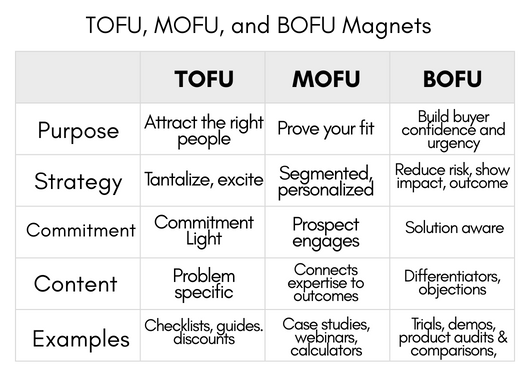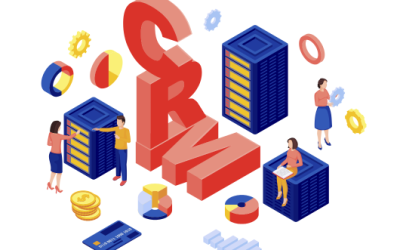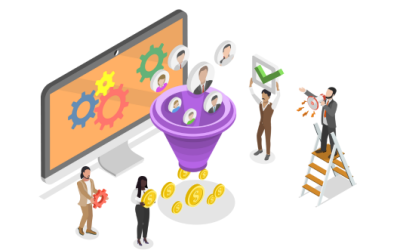[vc_row][vc_column][vc_column_text]In our previous blog, we shared the difference between the Buyer’s Journey and the Customer’s Journey. There is a misconception that they are one and the same, but this is not true. They are different. Therefore, it is important to know the difference so you can configure your CRM to guide people through both journeys.
There is a hierarchy with the journeys. A person cannot enter the customer’s journey without entering the Buyer’s Journey first. In this article, we are going to look at each stage of the Buyer’s Journey and share practical ways you can use your CRM to guide people from buyer to customer.
Let’s take a quick review of the Buyer’s Journey:
- Awareness Stage: The buyer realizes they have a problem.
- Consideration Stage: The buyer defines their problem and researches options to solve it.
- Decision Stage: The buyer chooses a solution.
Now, let’s paint a picture of a small business owner who has a CRM and wants to use it to guide people through the Buyer’s Journey and become a customer.
Jeremy and Ann run a residential landscaping business. They have 6 trucks and 14 landscapers. It is their goal to have all 6 trucks and landscapers on jobs every day. In order to do this, they need to attract qualified leads and convert them to customers. They started with implementing a CRM so they could funnel leads into a single platform to prevent Follow Up Fatigue.
Now that they have the CRM implemented, how do they use it effectively with a Buyer’s Journey? We are going to look at practical ways to use CRM for each stage.
Awareness
When someone realizes they cannot mow their lawn because they are too busy or they are not physically able, they are aware that they need help. Jeremy and Ann can create marketing material that empathizes with the homeowner’s problem and offer a reliable solution. The marketing material such as social media posts, blogs, or Google Adwords can drive the homeowner to a landing page on their website.
Using the “build a form” feature in their CRM, they can create a contact form and embed it on the landing page. The form will capture first name, last name, email, and phone number. If they ask for more information in the awareness stage, they increase the risk of the homeowner abandoning the form mid-way.
The CRM form captures the homeowner’s information and gives Jeremy and Ann two ways to contact them. It also provides enough information to guide the homeowner into the consideration stage.
Consideration
When someone enters the consideration stage, they have identified the problem and they are looking for solutions. In this case, the homeowner knows that they need a landscaper to tend to their lawn bi-weekly. They are researching landscapers who are reliable, so they don’t have to worry if it will get done or not. They want a landscaper who not only takes care of the lawn but takes care of the property such as cleaning off the driveway when they are done.
Now that Jeremy and Ann have captured the homeowner’s contact information, they know that the homeowner is now considering them. They can use their CRM to schedule a call or an appointment to visit the homeowner. They can send automated emails with information about their company, tips to maintain a great lawn, and build reasons for the homeowner to trust them.
At this point, the homeowner has narrowed down their choice of landscapers. They are entering the decision stage.
Decision
The homeowner has met Jeremy and Ann and the owners of two other landscaping companies. The homeowner has chosen to sign a contract with Jeremy and Ann. They use their CRM to send the contract for a digital signature. The whole interaction is digital and neither the homeowner or Jeremy and Ann have to worry about loose papers. This seamless process is giving the homeowner the confidence that they made the right decision.
Now that the homeowner has signed the contract, they have moved into the next journey. The Customer’s Journey. In our next article, we will share practical ways to use your CRM to nurture and strength your relationship with your customer.
Conclusion
Your CRM can be an effective asset to guide people through the Buyer’s journey and become your customer. If you are not using a CRM, but are in the awareness stage, we invite you to fill out our contact form or call us at 301-332-0613. We would love to help you make the best decision regarding a CRM.






